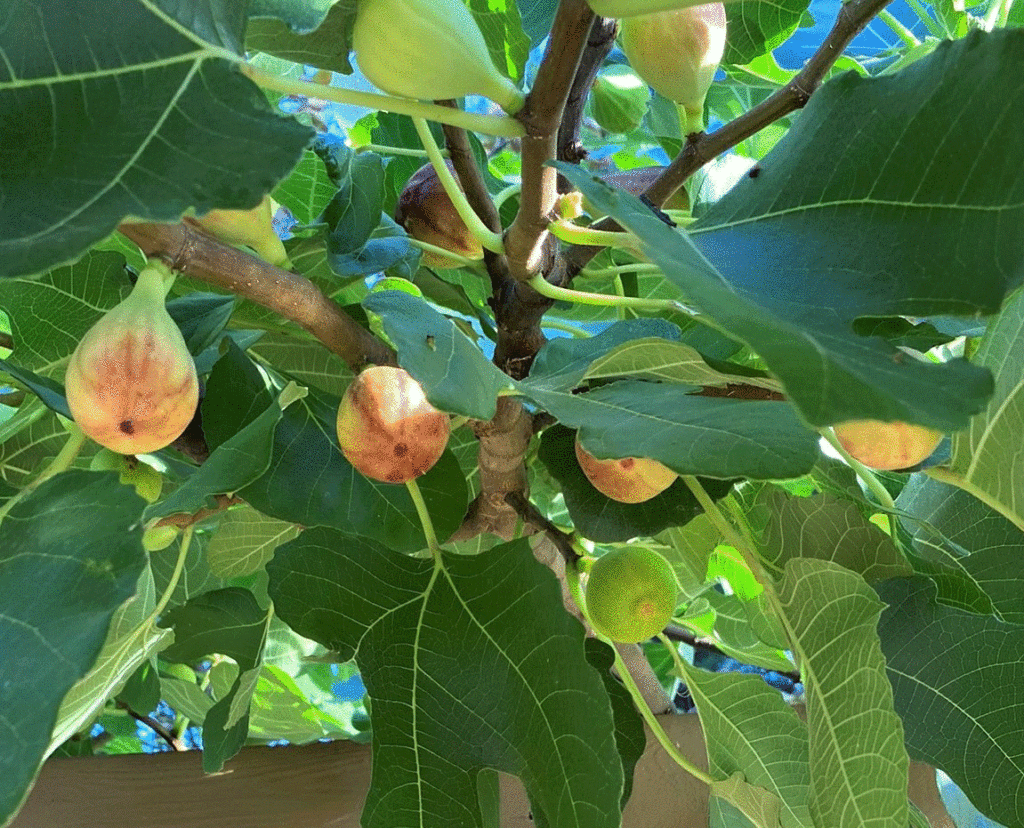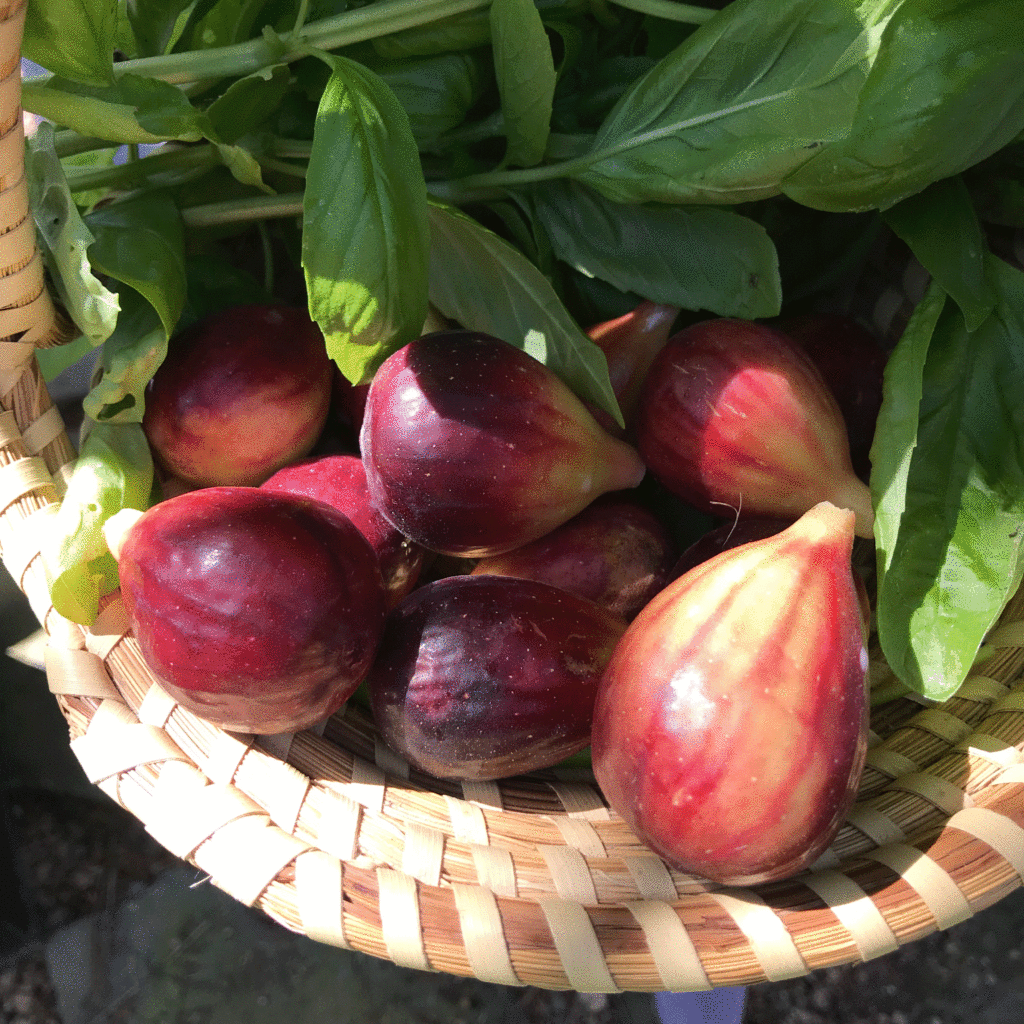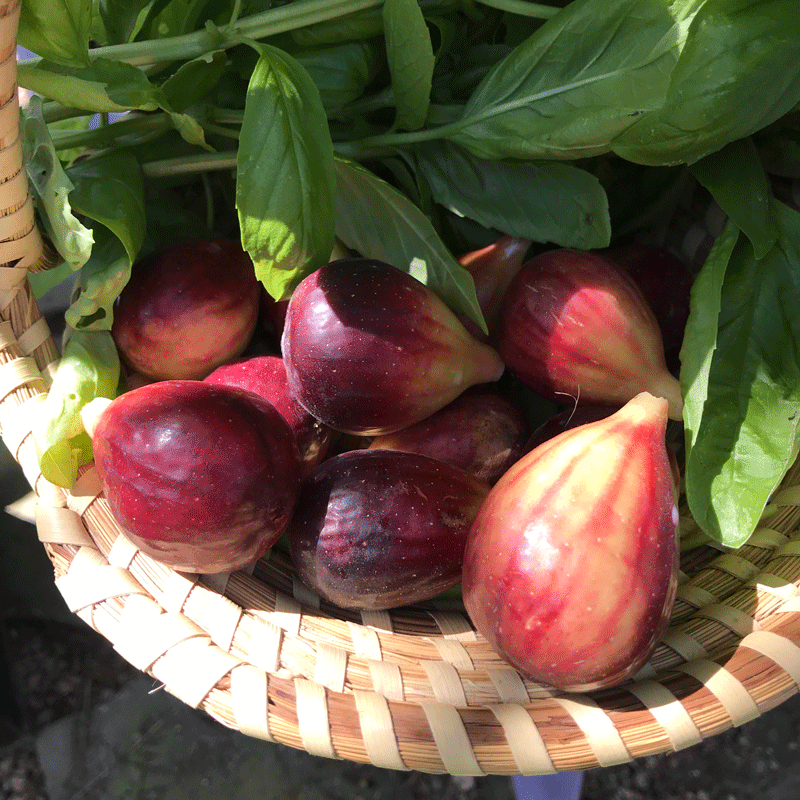Guest post by Shelley S. Cramm
Dear A Cook and Her Books readers – give a warm welcome to Shelley S. Cramm, author of My Father is the Gardener, Devotions in Botany and Gardening of the Bible. Shelley writes regularly about plants of the Bible for today’s gardens at her website www.gardenindelight.com.
Figs are one of my favorite garden fruits to grow for their sumptuous allure as well as their allusion to the Bible. As a gardener who delights to cook from our garden, I love having this luscious fruit available out the back door; figs are best enjoyed fresh from the tree, which makes grocery store offerings second fiddle to home garden goodness.
Also intriguing, the trees are the first real plants mentioned in the Bible that we can still cultivate in our gardens today, giving our garden care a timeless touch and connecting to deeper meanings and the dimension of gardening that speaks to the soul.
Growing Figs in Your Garden

Fig trees, Ficus carica, are lush, lobed-leaved, multi-trunked, deciduous trees, compatible with a range of climates and conditions. Gardens north, south, east, and west can easily host a fig tree; in colder weather, grow dwarf varieties in containers to overwinter indoors.
Check with your county extension service to see which varieties grow best in your region. ‘Brown Turkey,’ ‘Celeste,’ and ‘Peter’s Honey’ are just a few that grow well in the South.
Locate your fig tree with good drainage, keeping the surrounding ground moist but not too wet. Add mulch regularly under the tree over the years as it begins to shade out plants underneath the broad canopy, ensuring a steady supply of organic matter to the soil.
And that’s about the extent of your garden care! Pests and diseases rarely bother fig trees, especially when compared to many of the stone fruits’ neediness. Most fig cultivars are self-pollinating and pruning is only required to keep branching within comfortable reach for gathering fruits.
Be Recipe-Ready

The biggest problem I have with my fig tree is being ready for its abundant harvests. The trees have two crops, an early summer ripening and one in early fall, although timing from year to year can vary with fluctuating temperatures and rainfall. The first crop is honied with underlying vegetable-like bitterness— “early fruit,” as Song of Songs 2:13 NIV calls them. The later crop is the one to wait for, fully sweetened by a long summer’s sunshine.
The best way to manage your tree’s bounty? Have favorite recipes ready and waiting. Both crops seem to come in all at once, a gush of dizzying, fruity goodness. Try them sliced fresh and tossed in balsamic vinegar or create a green salad showcasing their brown-sugary spiciness; roast them with purple onion to accompany meats, or to mix in with cooked grains, pilaf-style. I am especially eager to try an upcoming fig dessert recipe from A Cook and Her Books – stay tuned soon with the harvests from your fall crops.
Figs in the Bible
Fig trees have been feisty in the Word of the Lord, first as part of the Garden of Eden cover-up, when Adam and Eve hid from God (Genesis 3:7-8), and later denying the famished Savior food, so that the infuriated Jesus caused a fig tree’s wither (Mark 11:12-15, 20-21).
Yet alongside these bitter moments, God provided fig trees as a reassurance of the good, fruitful land ahead for the Israelites (Deuteronomy 8:7-9). Moreover, “living under your own vine and fig tree” (1 Kings 4:25, Micah 4:4, Zechariah 3:10) was a poetic expression of peaceful times for sweet family life and neighborly love to flourish. Bitter and sweet, just like the two fig crops.
Fig Cakes

It turns out, “garden to table” was a way of life in ancient Israel, too. Figs were made into bread or cakes as a nourishing, sweet staple, fortifying King David’s army and reviving the weary along their journey (1 Samuel 25:18, 30:12, 2 Samuel 16:1). I love the description in 1 Chronicles 12:40, it sounds like a church potluck! All the families brought David’s men provisions; food was plentiful and so was the joy. Watch for Lucy’s next post, with an easy recipe for “fig cake.“
Introducing Guest Author Shelley S. Cramm

Author and gardener Shelley S. Cramm and her husband Topher live in Irving, Texas. As a young mother of five, her inspiration to write about Bible plants grew out of a routine of morning journaling and an enduring hope to finish up the laundry and get outside to garden!
You can find Shelley’s stories on her website, Garden in Delight. Sign up for her Devotations blog and seasonal newsletter. Follow Shelley on Instagram and Facebook, too.
Guest Posts on A Cook and Her Books
I’m honored when gardening authors agree to guest post on my blog. Check out herb expert Peggy Riccio’s story on growing lemon verbena and making cookies.
Join the Conversation
Join A Cook and Her Books on Instagram to talk about fruit and flowers and all good things from the kitchen and garden. Facebook is family, too. Would love to hear from you.



I enjoyed your post as I love figs and count Shelley as a loyal writer friend. We are trying to grow them in Iowa City, Iowa (zone 5). The first one was browsed by deer, but made it through the winter. I bought the second one this spring and it has flourished in a pot as our house and garden recover from a tornado. We are in Provence now and eating as many as we can.